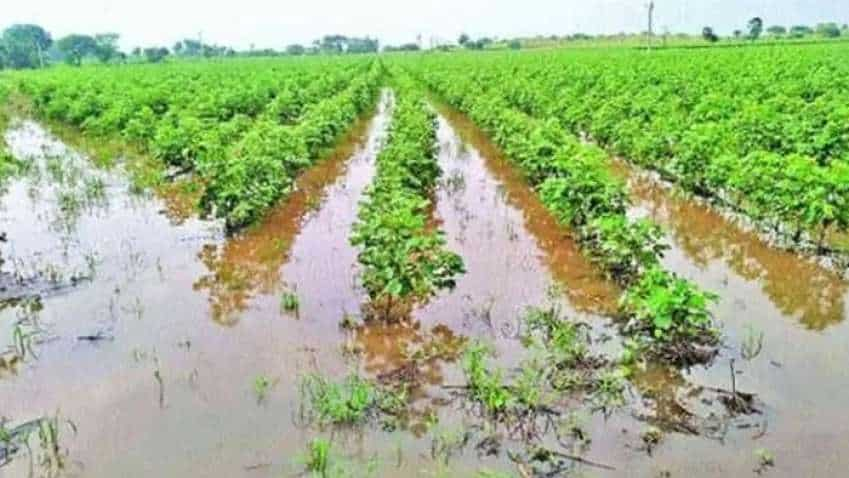Farmers suffer as unseasonal rains take toll on crops: List of govt schemes to compensate from crop losses and how to apply for them
According to the Department of Agriculture, Cooperation and Farmers Welfare, four insurance schemes are there to safeguard farmers financially against natural risks like natural disasters/ calamities, insect, pests & diseases and adverse weather conditions.

While farmers in India look forward to rains every year, unseasonal rains or excess precipitation makes matters worse for them. Recent trends of unexpected rains and hail during the harvesting season further worsen the situation as farmers barely get their investment back after months of back-breaking toil and hard work. A big chunk of farmers with small landholdings in India don't even earn enough to make both ends meet and if they lose their harvest due to weather conditions, it lands them in a spiral of debt.
Meanwhile, the weather department has predicted that rains are likely to continue in many parts of the country. Currently, states like Kolkata, Delhi, Rajasthan, and Chennai are witnessing rains, according to the IMD. In such a situation, the farmers can get monetary help and compensation from these government schemes —
Here's the list of government schemes that may help farmers to protect their crops.
According to the Department of Agriculture, Cooperation and Farmers Welfare, four insurance schemes are there to safeguard farmers financially against natural risks like natural disasters/ calamities, insect, pests & diseases and adverse weather conditions.
Pradhan Mantri Fasal Bima Yojana (PMFBY): Farmers get compensations under the crop insurance scheme Pradhan Mantri Fasal Bima Yojana. This scheme helps farmers to protect from crop losses.
The maximum premium for all farmers under this scheme includes:
i) Kharif season - 2 per cent of sum insured
ii) Rabi Season 1.5 per cent of sum insured
iii) Annual commercial/horticultural crops - 5 per cent of sum insured
Weather Based Crop Insurance Scheme (WBCIS): Insurance protection for notified food crops, oilseeds, and annual horticultural/commercial crops. The maximum premium for all farmers under the WBCIS scheme includes:
a) Kharif season – 2 per cent of sum insured.
b) Rabi Season 1.5 per cent of sum insured.
c) Commercial/horticultural crops 5 per cent of sum insured.
Coconut Palm Insurance Scheme (CPIS): This is the insurance protection for coconut palm growers. The premium rate per palm ranges from Rs 9 (in the plant age group of 4 to 15 years) to Rs 14 (in the plant age group of 16-60 years).
Under the scheme 50-75 per cent subsidy of premium is provided to all types of farmers.
When the palm is damaged, the claim payment equal to the input cost loss damage is payable to the insured in notified areas.
Unified Package Insurance Scheme (UPIS): Unified Package Insurance Scheme (UPIS) as pilot in notified districts. This scheme assists:
- To provide financial protection and comprehensive risk coverage of crops, assets, life, and student safety to farmers.
- Pilot will include seven sections namely crop insurance (PMFBY/WBCIS), loss of life (PMJJBY), accidental death & disability (PMSBY), student safety, household, agriculture implements & tractor.
- Crop Insurance will be compulsory. However, farmers can choose at least two sections from remaining.
- Farmers may be able to get all requisite insurance products through one simple proposal/ application form.
Farmers may contact the nearest branches of banks/PACS/cooperative banks/ common service center (CSC), impanelled general insurance companies notified for the area, and district agriculture officer/block development officer to opt for the schemes or visit the web portal www.pmfby.gov.in.
Get Latest Business News, Stock Market Updates and Videos; Check your tax outgo through Income Tax Calculator and save money through our Personal Finance coverage. Check Business Breaking News Live on Zee Business Twitter and Facebook. Subscribe on YouTube.
RECOMMENDED STORIES

SCSS vs FD: Which guaranteed return scheme will give you more quarterly income on Rs 20,00,000 investment?

Rs 3,500 Monthly SIP for 35 years vs Rs 35,000 Monthly SIP for 16 Years: Which can give you higher corpus in long term? See calculations

Power of Compounding: How long it will take to build Rs 5 crore corpus with Rs 5,000, Rs 10,000 and Rs 15,000 monthly investments?

Looking for short term investment ideas? Analysts suggest buying these 2 stocks for potential gain; check targets
02:50 PM IST










 Rainfall Update: Heavy rains in Tamil Nadu, orange alert in three districts today
Rainfall Update: Heavy rains in Tamil Nadu, orange alert in three districts today Heavy Rain expected in Tamil Nadu & Kerala; strong winds to continue across North India: IMD Scientist Soma Sen
Heavy Rain expected in Tamil Nadu & Kerala; strong winds to continue across North India: IMD Scientist Soma Sen Monsoon rains 8% above long-period average, says weather office IMD
Monsoon rains 8% above long-period average, says weather office IMD Japan to see unusually hot weather in early October
Japan to see unusually hot weather in early October 47 roads closed in Himachal, 3 districts under risk of low flash floods
47 roads closed in Himachal, 3 districts under risk of low flash floods